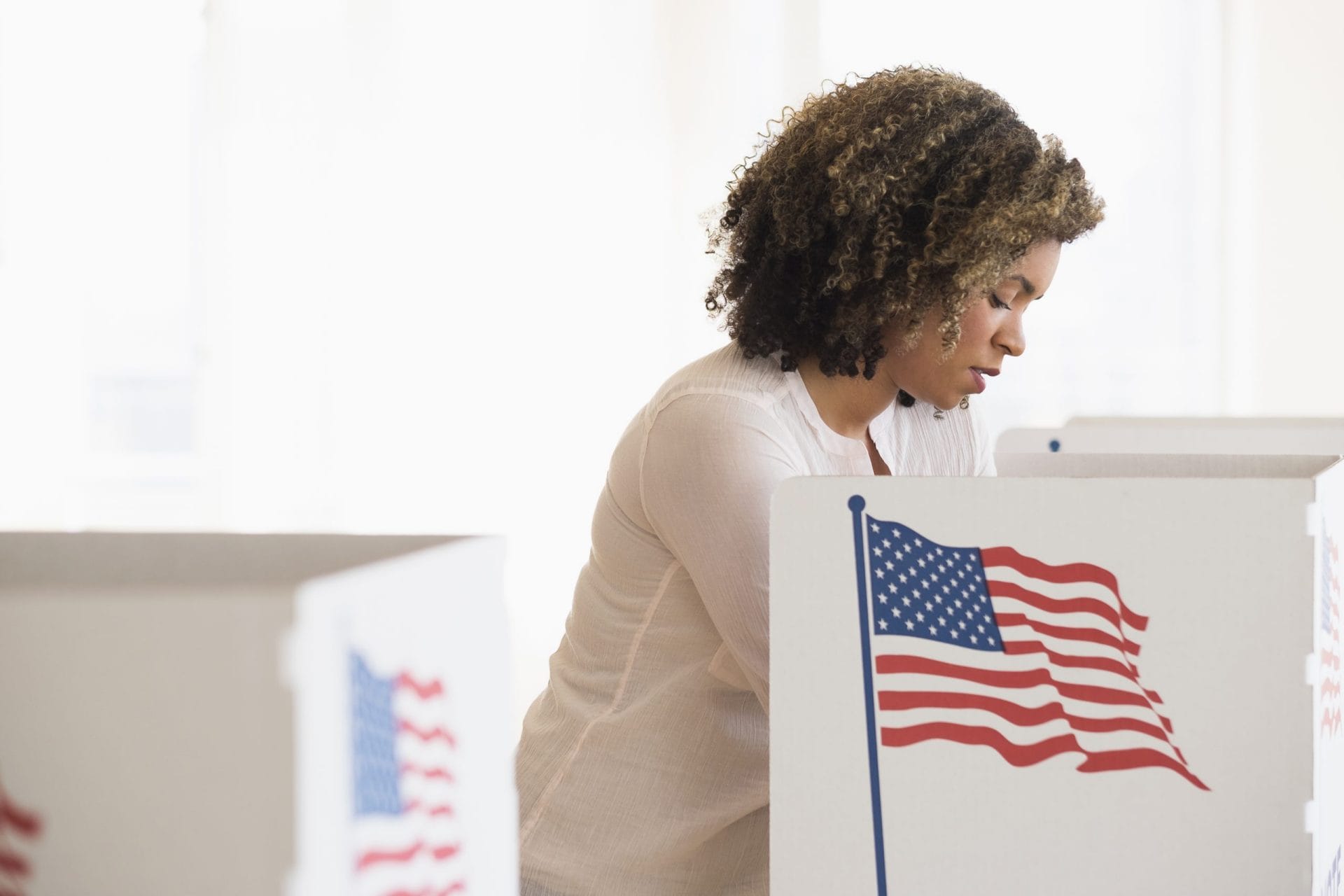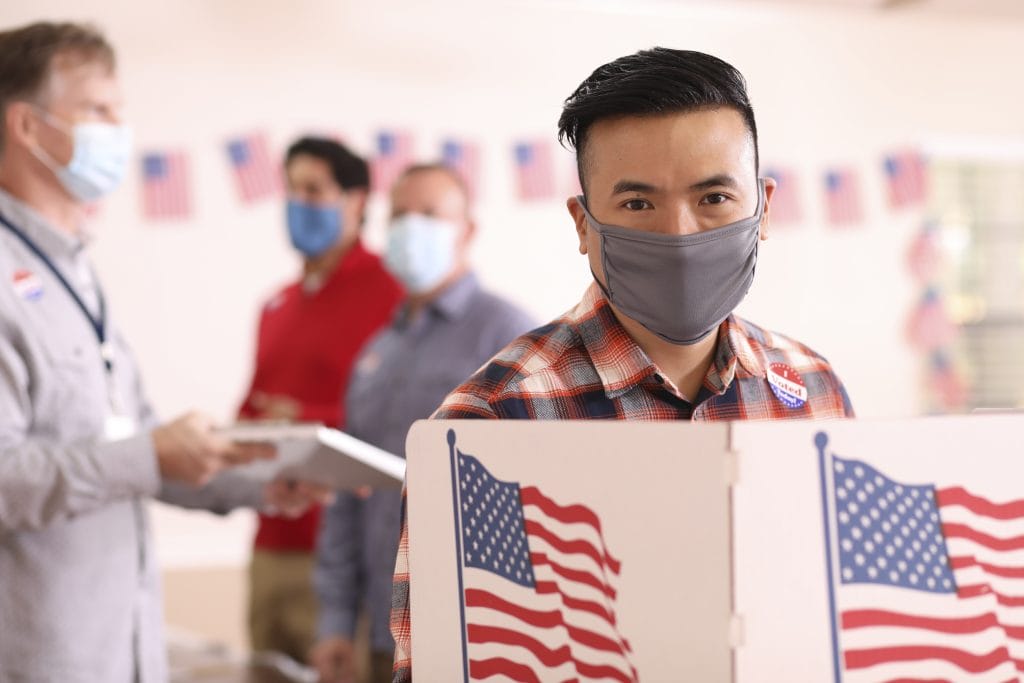
Preventing Armed Voter Intimidation
A State-by-State Analysis
“The vote is precious. It is the most powerful non-violent tool we have in a democratic society, and we must use it.”
John Lewis
Introduction
In 1965, Representative John Lewis marched from Selma, Alabama, to the state capital of Montgomery in support of voting rights. A Black man in the Jim Crow South, Lewis was viciously beaten for exercising his First Amendment rights. Tragically, in modern-day America, violence is still used to chill the exercise of free speech, the right to peaceably assemble, and other constitutional rights. And physical violence is not the only tool used by those intent on intimidating Americans participating in the democratic process.
Increasingly, gun rights extremists have turned to brandishing and displaying firearms as a key tactic at protests. In the lead-up to the 2020 election, the presence of heavily armed protesters and counter-protesters has contributed to numerous violent incidents, including several fatal shootings. As Election Day approaches, the potential for openly carried firearms at polling places, election offices where votes are tallied, or other spaces crucial to voters casting their ballots creates a serious risk of disenfranchising Americans, particularly Black and Brown voters.
The following resource is intended to empower election officials and others to protect Americans from firearms intimidation and harassment while exercising their constitutional right to vote.
Background
During a highly contested race for governor of New Jersey in 1981, the Republican National Committee (RNC) sent armed, off-duty police officers to polling locations in predominantly Black communities. Wearing armbands displaying “National Ballot Security Task Force,” the officers posted warnings that they were “patrolling” the election for signs of voter fraud. As word spread of the presence of armed law enforcement at the polls, many Americans who were legally entitled to vote grew fearful. Some worried about interaction with law enforcement due to outstanding warrants, unpaid traffic tickets, missed child support payments, or prior negative interactions with police. As a result, countless individuals, predominantly Black, were disenfranchised.
The Democratic National Committee (DNC) subsequently sued the RNC, claiming its tactics constituted racially discriminatory voter suppression. As a result of that lawsuit, the RNC consented to a federal decree, which required judicial oversight and prevented the use of race as a factor in its poll watching strategy. In effect for the last nine presidential elections, the consent decree expired in 2017.
In 2020, President Trump vowed to send law enforcement to polling locations using the same disproven and inaccurate justification that the RNC cited in the 1981 New Jersey election: that voter fraud is a legitimate threat to the integrity of American elections. As in 1981, the presence of armed on- or off-duty law enforcement at polling locations could significantly deter voting by voters of color who are disproportionately impacted by police violence, as could the presence of armed civilian vigilantes.
Trump Incites White Armed Protesters
Laura Cutilletta—Aug 28, 2020
President Trump arguably lacks the authority to deploy active-duty law enforcement to monitor the polls, but armed individuals are still likely to be present at the polls this fall, possibly in greater numbers than ever before. The RNC is recruiting 50,000 volunteers to monitor polling places for signs of voter fraud. While neither the RNC nor others have explicitly called for poll watchers to carry firearms, Americans are increasingly witnessing right-wing extremists and Trump supporters using firearms when expressing anger or frustration, such as those incensed by gun safety laws, shelter-in-place restrictions, and peaceful protests for racial justice. Given this backdrop, it is likely that significant numbers of people will bring guns to polling places under the guise of preventing election fraud.
In 2020, with gun violence at epidemic levels in the United States, the presence of armed individuals angered by false claims about voter fraud creates real health and safety risks. The presence of guns makes it more likely that heated confrontations will turn deadly. With 46 states allowing private citizens to challenge a voter’s eligibility, guns at the polls are a tinder box near an open flame.
The broad, suppressive net that guns may cast at the polls is not a foregone conclusion. Six states and the District of Columbia explicitly prohibit guns at polling locations altogether, while an additional four states prohibit concealed firearms at the polls. Guns may also be prohibited when polling locations are on K–12 schools and other types of public property where firearms are not permitted. Additionally, even where guns are not prohibited outright, nearly all 50 states have laws that prohibit using firearms to intimidate.

Conclusion
In 1946, a mob of angry white people armed with guns prevented Black voting rights activist Medgar Evers from voting. More than half a century later, attempts to disenfranchise and intimate voters with firearms continue. Knowledge of the relevant laws that prohibit this conduct and proper preparation to prevent it can help protect Americans’ constitutional right to vote and stop the cycle of disenfranchisement. We hope that elected leaders, stakeholders, and advocates use this resource to inform poll watchers and workers of their right not to be harassed with firearms, and that election administrators use this resource to train poll workers and others on how to identify unlawful behavior and respond appropriately if it occurs.
Voters who experience problems on Election Day should call 1-866-Our-Vote, a national, nonpartisan Election Protection coalition formed to ensure that all voters have an equal opportunity to participate in the political process.
SUPPORT GUN SAFETY
We’re in this together. To build a safer America—one where children and parents in every neighborhood can learn, play, work, and worship without fear of gun violence—we need you standing beside us in this fight.

